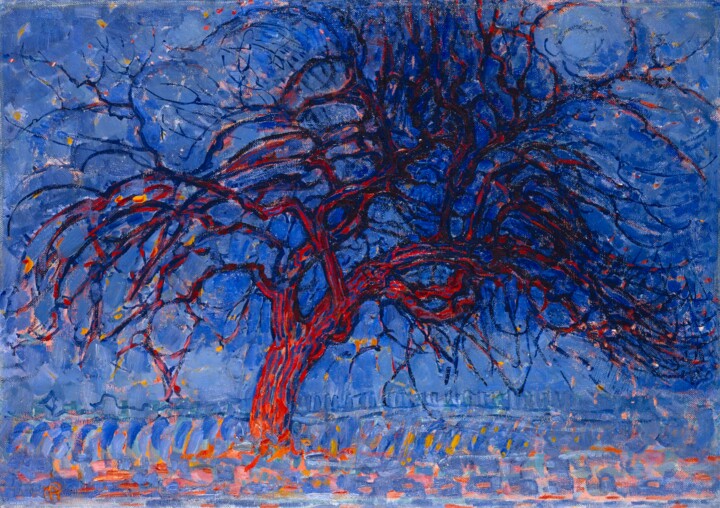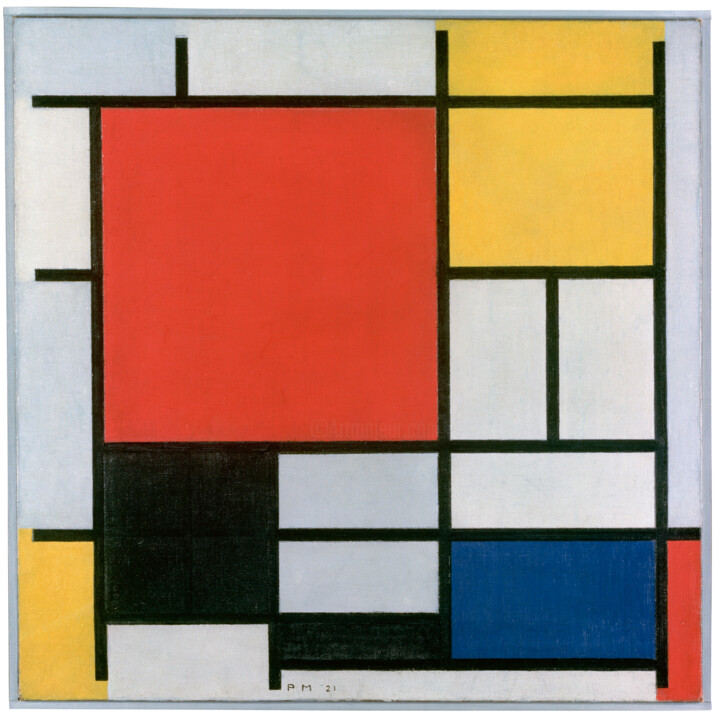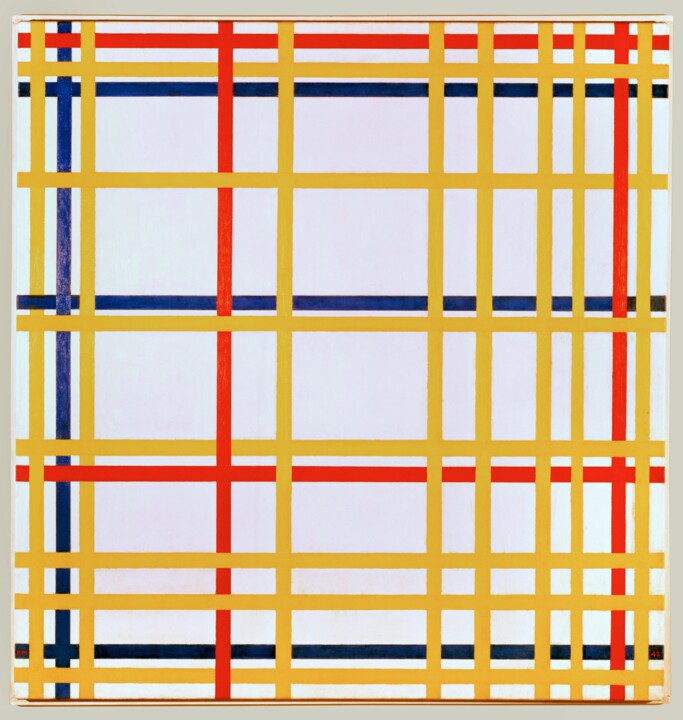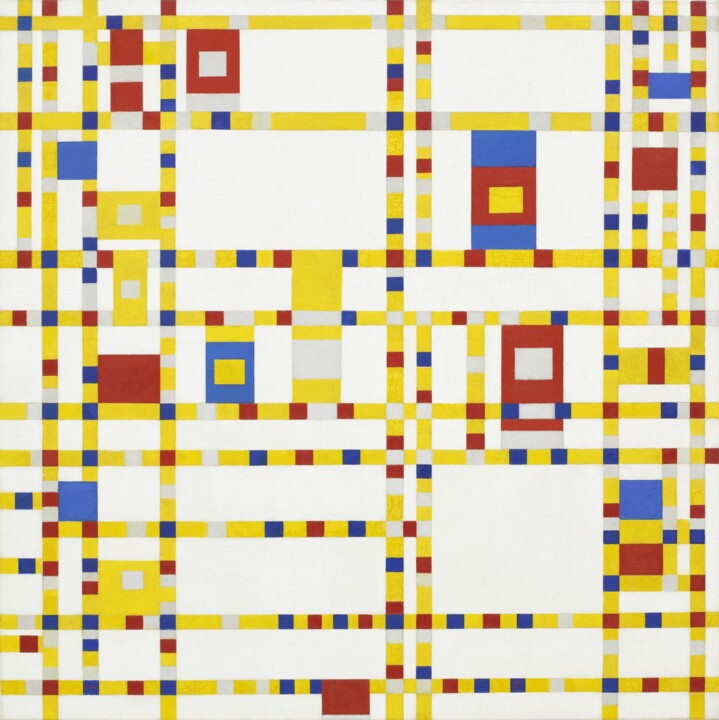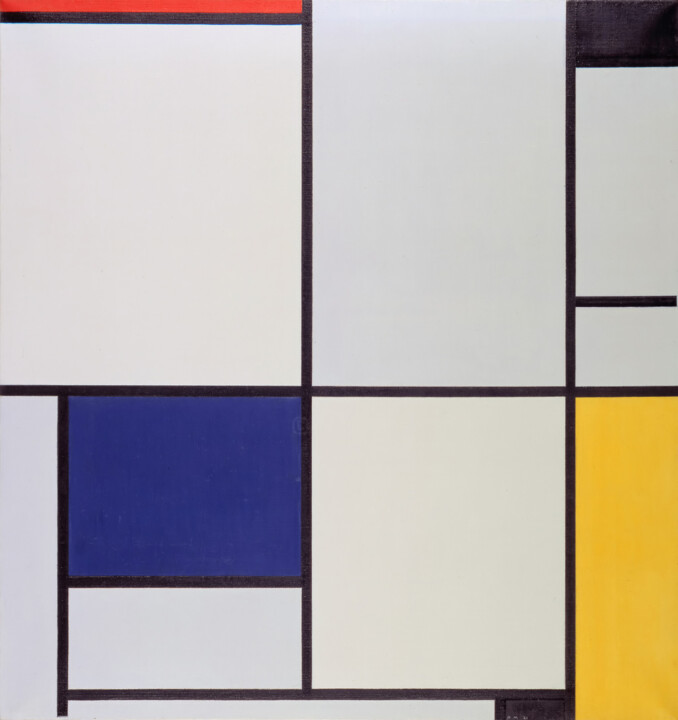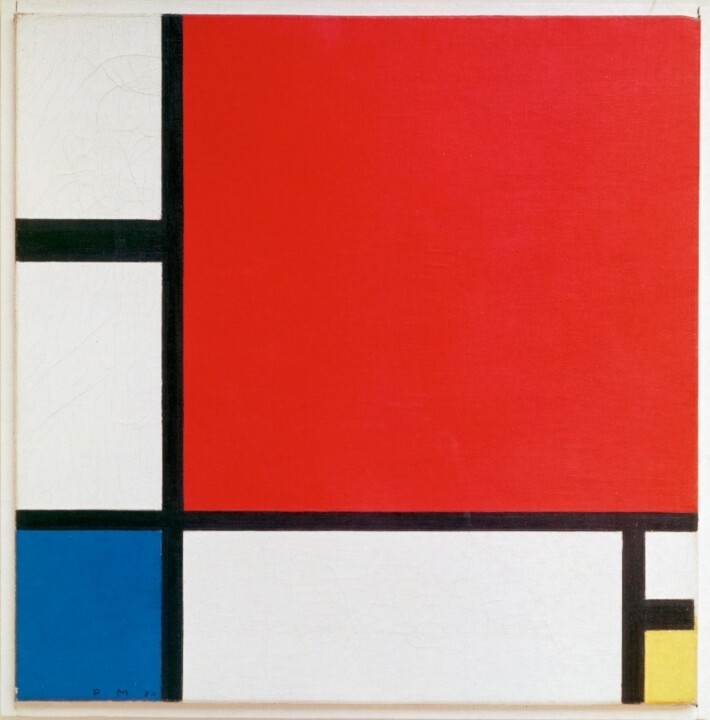 Piet Mondrian - Composition with Red Blue and Yellow, 1930. Oil on canvas. Kunsthaus Zürich, Switzerland
Piet Mondrian - Composition with Red Blue and Yellow, 1930. Oil on canvas. Kunsthaus Zürich, Switzerland
Who was Piet Mondrian?
Piet Mondrian was a Dutch painter who lived from 1872 to 1944. He was a pioneer of abstract art and one of the founders of the De Stijl movement. Piet Mondrian's artistic approach was defined by his belief in the power of abstraction and his desire to create a universal visual language. Throughout his career, he worked to simplify his forms and focus on the use of primary colors and geometric shapes. Mondrian's early works were influenced by traditional Dutch landscape painting, but he gradually moved towards abstraction, reducing his forms to their essential components. He believed that abstract art could express universal truths and that it had the potential to create a new kind of beauty that was not tied to the natural world.
 Piet Mondrian. Photo from De Stijl, vol. 5, nr. 12 (December 1922): p. 179
Piet Mondrian. Photo from De Stijl, vol. 5, nr. 12 (December 1922): p. 179
The largest collection of Piet Mondrian's paintings is held by the Kunstmuseum Den Haag in The Hague, Netherlands, who has a long history of collecting and exhibiting modern art. The museum was able to gather the biggest collection of Mondrian's works globally, thanks in part to the contribution of two private collections: one belonging to Mondrian's close friend, real estate agent Sal Slijper, and the other to his childhood friend Albert van den Briel. The collection includes almost 300 pieces that showcase every phase of Mondrian's impressive artistic evolution, beginning from the early landscapes he painted in and around Amsterdam and Domburg, and progressing to the fundamental abstraction he discovered in Laren and Paris, culminating in his work produced in New York, where he created the radical new rhythm that characterizes his final masterpiece, “Victory Boogie Woogie” (1942-1944). The museum has organized numerous exhibitions of Mondrian's work over the years, and it continues to be a leading center for scholarship and research on the artist's life and work.
De Stijl and Neoplasticism
Mondrian, De Stijl, and Neoplasticism are closely connected as they are all part of the same modern art movement that emerged in the Netherlands in the early 20th century. De Stijl was an art movement that encompassed a broad range of artistic practices, including painting, architecture, and design. The movement was characterized by a commitment to abstraction, simplicity, and geometric form, as well as a belief in the transformative power of art and design to create a new, more harmonious society.
Neoplasticism, on the other hand, was a specific artistic philosophy that was developed by Piet Mondrian. Neoplasticism emphasized the use of geometric forms, primary colors, and a grid-based composition, with the aim of creating a universal visual language that could express the underlying harmony of the universe. Mondrian believed that this approach could create a new kind of beauty that was not tied to the natural world, and that it could help to transform society by promoting a more rational and harmonious approach to design.
While Neoplasticism was an important part of the De Stijl movement, it was not the only approach that was embraced by the movement's members. Other artists associated with De Stijl, such as Gerrit Rietveld and Theo van Doesburg, explored different aspects of abstraction, design, and architecture. However, the movement as a whole was characterized by a shared commitment to the principles of abstraction, simplicity, and harmony.
"Composition with Red, Blue, and Yellow" demonstrates several key characteristics of Neoplasticism and the De Stijl movement: First, the painting features a strict geometric grid made up of black lines that divide the canvas into smaller rectangles. This grid creates a sense of order and structure, which was a central principle of the De Stijl movement. Second, the painting uses only primary colors (red, blue, and yellow) and non-colors (white, black, and gray). This emphasis on basic colors and the exclusion of secondary colors was also a hallmark of the De Stijl style. Third, the rectangles of color within the grid are carefully placed to create a sense of balance and harmony. The composition is symmetrical, with the colors and shapes carefully arranged to create a sense of equilibrium.
“Composition with Red, Blue and Yellow”
"Composition with Red, Blue and Yellow" is a famous abstract painting created by Piet Mondrian in 1930. The subject matter of this painting is purely abstract, as it features only geometric forms, lines, and primary colors. The painting is divided into a grid of rectangular shapes, with black lines defining their borders. Within this grid, Mondrian has used only three primary colors: red, blue, and yellow, which are arranged in a balanced composition. The colors and shapes are carefully positioned to create a sense of harmony and balance, with the red, blue, and yellow blocks placed in strategic positions to create a dynamic tension between them. The painting is a celebration of simplicity and order, and it has become an iconic symbol of modern art.
Mondrian believed that this abstract visual language could convey the universal balance and harmony that underlies all of reality. He saw his art as a way of representing the underlying spiritual essence of the universe, which he believed could be expressed through simple geometric forms and primary colors.
While the painting does not depict any recognizable objects or figures, it is nevertheless a powerful expression of Mondrian's artistic vision and his belief in the power of abstraction to create a new kind of art that transcends cultural and national boundaries. "Composition with Red, Blue and Yellow" demonstrates Mondrian's commitment to simplicity, harmony, and abstraction. It is considered to be one of the most significant paintings of the 20th century.
"Composition with Red, Blue, and Yellow" in pop culture
"Composition with Red, Blue, and Yellow" has been referenced and appropriated in popular culture in various ways, demonstrating the lasting impact of his abstract style on contemporary art and design.
In fashion, the iconic color-blocked design of the painting has inspired numerous fashion designers, including Yves Saint Laurent, who famously used the design in his 1965 collection. The style has since been used in many other fashion collections and can be seen in clothing, accessories, and even makeup.
In advertising, the painting's bold and simple design has been used to promote a wide range of products, including automobiles, furniture, and home decor. It is often used to convey a sense of modernity, sophistication, and simplicity.
In music, the painting has been referenced and appropriated in album cover designs, music videos, and stage designs. In film and television, the painting has been featured in various contexts, from set design to costume design. For example, the painting appears in the background of a scene in the 2009 film "The International," and it has been referenced in episodes of TV shows like "The Simpsons" and "The Big Bang Theory."
Mondrian's "Composition with Red, Blue, and Yellow" has become an iconic image in contemporary culture, and its influence can be seen in many different contexts, from art and design to fashion and advertising.

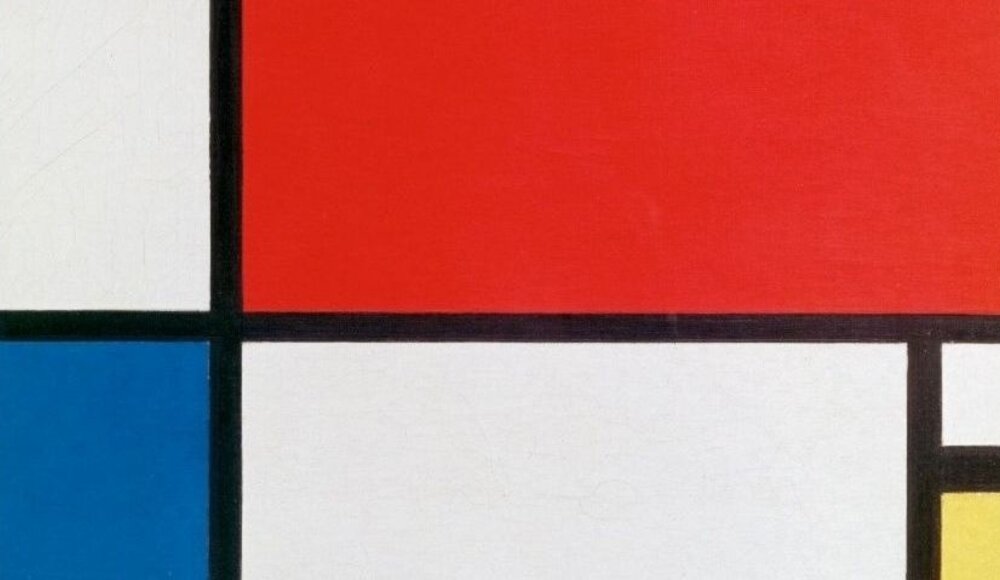
 Selena Mattei
Selena Mattei

